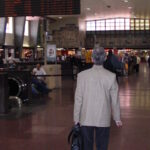Say Goodbye to the Acelas.
 Senator Chuck Schumer, a Democrat from New York, has announced that Amtrak is dotting i’s and crossing t’s on an agreement that would allow the railroad to buy new trainsets that will replace the sort-of-high-speed Acelas on the Northeast Corridor. The deal, supposedly worth $2.5 billion, is expected to be OK’d by Amtrak’s board … and may already have been approved by the time I get this posted.
Senator Chuck Schumer, a Democrat from New York, has announced that Amtrak is dotting i’s and crossing t’s on an agreement that would allow the railroad to buy new trainsets that will replace the sort-of-high-speed Acelas on the Northeast Corridor. The deal, supposedly worth $2.5 billion, is expected to be OK’d by Amtrak’s board … and may already have been approved by the time I get this posted.
The contract will be going to Alstom, a French-owned company, but no matter … it’s good news for the central part of New York State because it’s likely to create 750 jobs there–more than half at the Alstom plant in Hornell, the rest in companies throughout the upstate area.
And how, you may ask, can Amtrak afford $2.5 billion for all these new trainsets when they’re still trying to save money by cutting out the free cranberry juice for sleeping car passengers? Excellent question. Answer: If everything goes as planned, the funding will come through the Railroad Rehabilitation and Improvement Financing program—known to its friends as RRIF—subject to approval from the U.S. Department of Transportation. With all those jobs in New York at stake, you can bet Senator Schumer is all over that like flies on a cow pie.
But what about me? Most of my train travel is across the country from the West Coast to wherever the twice-a-year NARP meetings are being held. Along with 4.7 million others who ride the long-distance trains, I’ll still be clanking along in a Superliner sleeping car that was very likely built 35 years ago and has probably been refurbished at least a couple of times since.
Notwithstanding this new deal, the fact remains that Amtrak is still trying to save money by not slipping a morning paper under the door of my roomette, and eliminating the three olives on a toothpick that used to garnish my Bloody Mary in the Pacific Parlour Car. It is long past time for the long-distance trains, and those of us who ride them, to get some serious consideration.



Your points are well taken. Interestingly, the Acelas provide the only daytime F Class service; also, we have never heard Rep. Mica complain about this level of Acela service (other than about the distinguished chefs who added a gallant touch to the menu years ago).
However, there was a reason the French referred to the Acelas as “Pigs” due to their weight and other restrictive requirements courtesy of the FRA. Although Acela may be quite competitive in the NYC-WAS corridor, Acela is not at all competitive in the NYC-BOS corridor, beaten even by Bolt and Megabus schedules. Current Acela schedules, if even adhered to, are barely improved over the New Haven’s “Merchants Limited” and ‘Yankee Clipper,” carded on that route thru 1969 at 4.15 hours, including a power change in New Haven! That is why I have pushed for further segmentation of services on the “Northeast Regionals” to fulfill the market demand at the top for F Class, and, to start competing with Bolt/Megabus, creating a new T (Tourist) Class for the college student and elderly bus market.
As you indicated, the long distance trains cannot remain the step-child forever, as these routes remain the potential “bread & butter” for Amtrak revenue maximization. To get to that point requires a clear focus on acquiring appropriate equipment and implementing improved on-board services. Although the “Coast Starlight” is a good beginning, we need a greater choice in sleeper accommodations, a true first class diner, and a separate first class lounge. Coach needs to enter the 21st century to muffle the noise and smells and provide a more commodious seat; offer a coffee shop lounge that were SOP to take the burden off the diner on the Western trains of the AT&SF, GN, NP, and CB&Q.
Without a dramatic change focused on the long distance routes, we will merely continue to hear the banging of the tin cup with no change; effectively discouraging increased travel demands and becoming a self-fulfilled prophesy of minimal use–merely there because that’s what Amtrak started with in 1971.
Would one be correct in guessing that if Amtrak gets to buy expensive new trains, that the new trains would be significantly faster than what Amtrak is currently operating? If so, would Amtrak also get the money for new tracks (gentle curves, and safe crossing) to operate these trains at higher speed?
I’ve not seen anything about the specs for the new equipment, but–as you indicate–it’s the track that determines how fast the train can travel. The Acelas run at 150 mph for brief stretches, and I have to assume that the new trains will be capable of at least that speed.